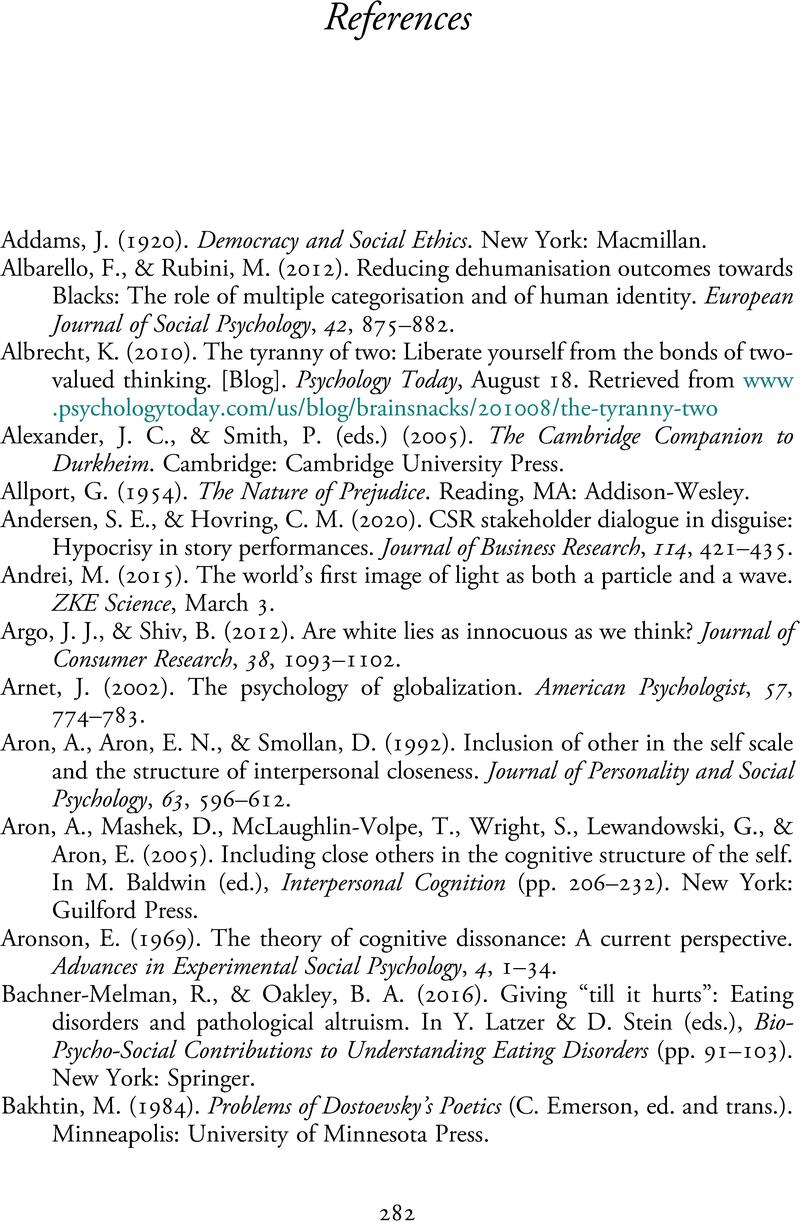Book contents
- Entering the Moral Middle Ground
- Cambridge Series on Possibility Studies
- Entering the Moral Middle Ground
- Copyright page
- Dedication
- Contents
- Figures
- Tables
- Preface
- Acknowledgments
- Introduction
- Chapter 1 Dialogical Self Theory and the Process of Positioning
- Chapter 2 Embracing Bad as Good via Internalization
- Chapter 3 Rejecting Bad via Externalization
- Chapter 4 The Vitality of the Moral Middle Ground
- Chapter 5 Contradiction as Intrinsic to the Multiplicity of the Self
- Chapter 6 Multilevel Identity and the Moral Middle Ground
- Glossary
- References
- Index
- References
References
Published online by Cambridge University Press: 15 March 2024
- Entering the Moral Middle Ground
- Cambridge Series on Possibility Studies
- Entering the Moral Middle Ground
- Copyright page
- Dedication
- Contents
- Figures
- Tables
- Preface
- Acknowledgments
- Introduction
- Chapter 1 Dialogical Self Theory and the Process of Positioning
- Chapter 2 Embracing Bad as Good via Internalization
- Chapter 3 Rejecting Bad via Externalization
- Chapter 4 The Vitality of the Moral Middle Ground
- Chapter 5 Contradiction as Intrinsic to the Multiplicity of the Self
- Chapter 6 Multilevel Identity and the Moral Middle Ground
- Glossary
- References
- Index
- References
Summary

- Type
- Chapter
- Information
- Entering the Moral Middle GroundWho Is Afraid of the Grey Wolf?, pp. 282 - 295Publisher: Cambridge University PressPrint publication year: 2024



